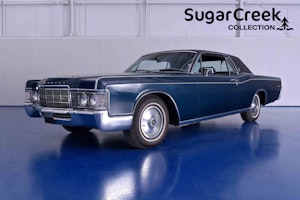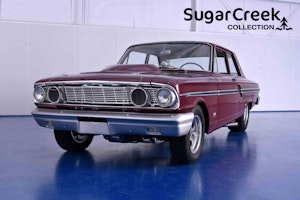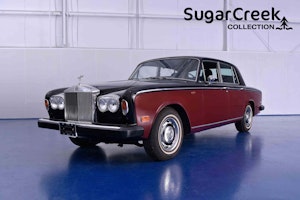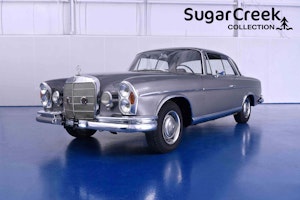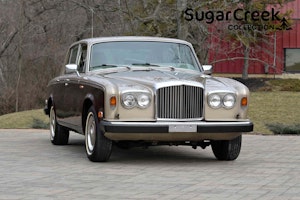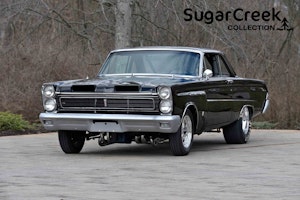Media | Articles
The Cars from Season 2 of Kleo, a Thriller behind the Iron Curtain
It’s been said that all you need to make a movie is a girl and a gun. For Netflix’s German series Kleo, though, the winning combination is a girl with a gun.
Kleo is a darkly funny, darkly thrilling ride with a little something for everyone: double agents and betrayals, Communist conspiracies and coups, immaculate production design and cinematography, visceral action, romance, family secrets, cosmonauts, princesses from faraway stars, and for the gearhead, scads of unusual Soviet-era cars.

The first season follows its titular character Kleo (Jella Haase), a Stasi assassin who’s burned and imprisoned without explanation. When she’s released after the fall of the Berlin Wall, Kleo’s hellbent on discovering who betrayed her and why, and then systematically exacting vengeance on every single person responsible. Its second season premiered on July 25th and picks up right where the last season left off, with Kleo still trying to put together the pieces of her past.


This means Kleo’s blue ’77 Wartburg 353 W De Luxe remains, and Dimitrij Schaad’s Miami Vice-cop-wannabe Sven Petzold still drives his blue ’65 Ford Mustang. Kleo’s and Sven’s sexy cat-and-mouse games continue, of course, and their cars of choice sum up the distance between them physically, emotionally, ideologically: Kleo has an East German ride, while Sven’s car is thoroughly American, embodying the capitalist Western world and its sudden presence in the Eastern bloc.


With Sven’s interference and assistance, Kleo continues her search for the series’ MacGuffin, a red suitcase with contents that could save the world—or end it—as well as answer questions about her childhood, finally filling in the blanks of Kleo’s missing memories. Andrej Kaminsky plays Comrade Nikolai Zhukov of the KGB, this season’s primary villain, which means the show journeys into Moscow and shows off a handful of Russian cars from the era.
Marketplace
Buy and sell classics with confidence
The series’ automotive eye candy adds texture and color to its saturated palette, with cars almost always in striking shades like bright blues and reds, black and white, neons like lime green and orange—Julius Feldmeier’s eccentric techno-head Thilo keeps his DJ equipment on a sunflower-yellow Mercedes-Benz LK-class truck. (Which would have been very rare and very expensive—but Thilo claims to be sent to Earth from a star called Sirius B, so for him, anything’s possible.)

Kleo’s car curation provides an even more essential element: historical authenticity. The Soviets had an insular car industry; cars made by manufacturers like ZAZ, GAZ, UAZ, and AZNP are mostly unheard of, and rare to see outside of these countries and this time period. (The “AZ” in many of the names stood for “avtomobilny zavod”—or automobile plant—as they were often unimaginatively named after the plant’s location.) Aside from Sven’s Mustang, American cars were still scarce in this part of the world, though there is a brief cameo from a shiny new ’91 Buick Park Avenue, which almost immediately gets blown up outside Olympic Stadium in a hit carried out against members of the U.S. diplomatic mission in West Berlin.




In theory, the Soviet Union wanted their own automotive industry to satisfy the needs of every citizen; in practice, however, cars were hard to come by for regular folk. Even if you could afford one, you’d be placed on a waiting list indefinitely, and it could take years to receive your car. The elite, however, were well-provided for. The nomenklatura (high-ranking Soviet bureaucrats) often got to enjoy extravagances that the proletariat did not, including access to luxury cars. As a former Stasi assassin, it makes sense that Kleo would own a Wartburg, and Comrade Jutta (Lisa Hrdina) would drive her cream-colored ’90 Trabant 601 Universal. It was the third generation of the Trabant, assembled in Zwickau, Saxony from 1964 through 1990, and the most popular car in East Germany.
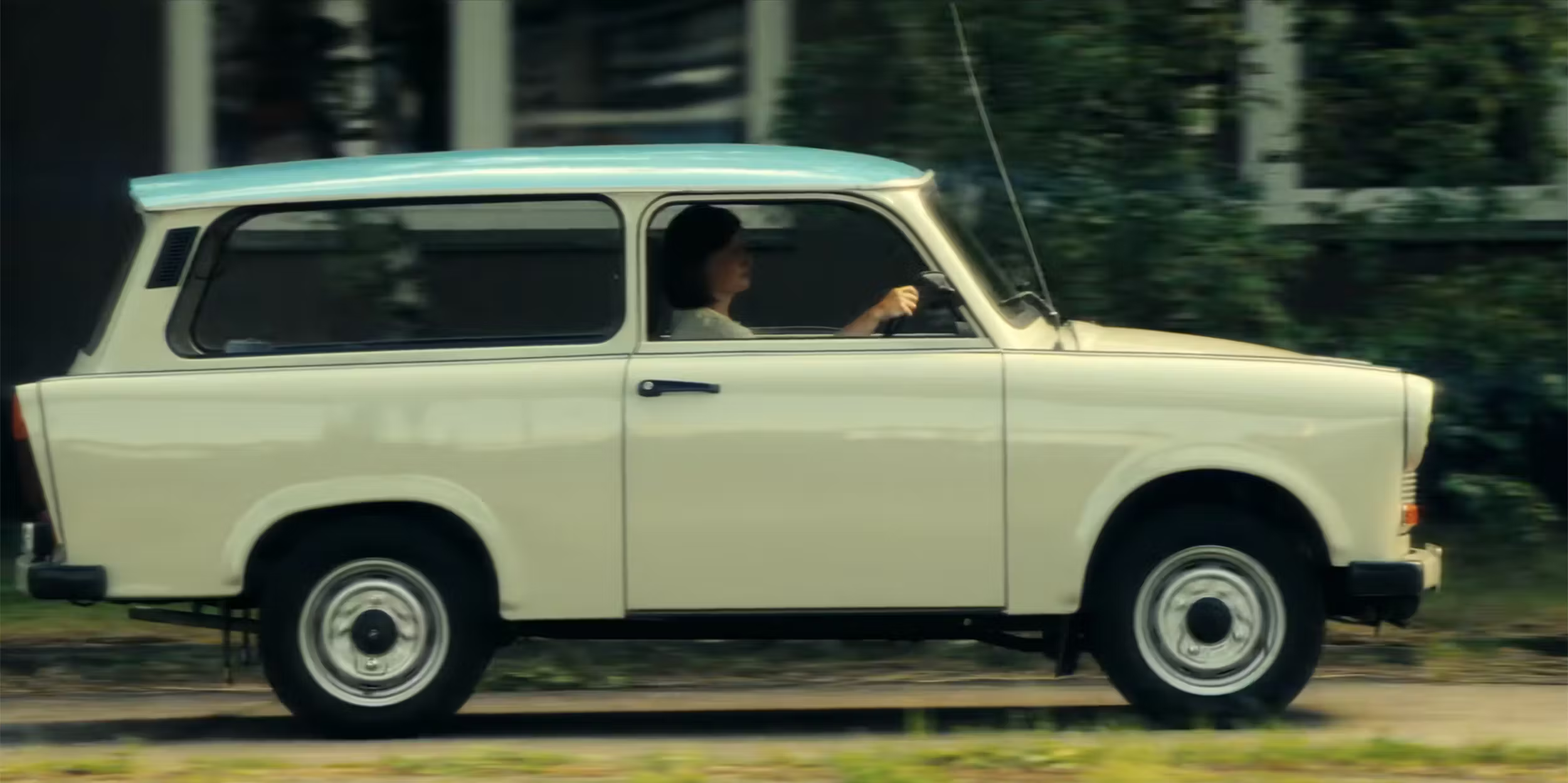
In the first episode, Eugen Knecht’s Piotr, “a comrade from the 25th Tank Brigade,” and David Bredin’s Mike roll up in a white 1960 Moskvitch 407, a car created by a mid-market company that produced vehicles not unlike the European Opel. It was a larger car for the middle class, frequently exported, though they were still difficult to come by in the Soviet Union. It follows, then, that Mike and Piotr might have access to such a nice car, considering Piotr has the power to provide his compatriots with everything from a battle tank to a trunk full of rocket launchers.
But the Soviets did ultimately try to supply its populace with an affordable, basic car with the help of Fiat. The Italian company stepped in and helped the Soviet Union and the Eastern Bloc put together factories with assembly lines for mass production of what would become their most recognizable car: the VAZ 2101, better known as the Lada and nicknamed Kopeyka after the smallest Soviet coin (about 1/100 of the ruble). The Lada was essentially a Fiat 124 with some adjustments to make it better suited for Russian terrain; it became the Russian people’s car, their equivalent of a VW Beetle. Sven’s and Kleo’s little black car that they tool around in when they reach Moscow is a VAZ-2106, more often called a Lada 1600, the most successful Lada. (The pair also get picked up at the airport by a red Lada Niva, also known as a VAZ-2121.) Though many Soviet cars have become obsolete, the Lada brand endures.
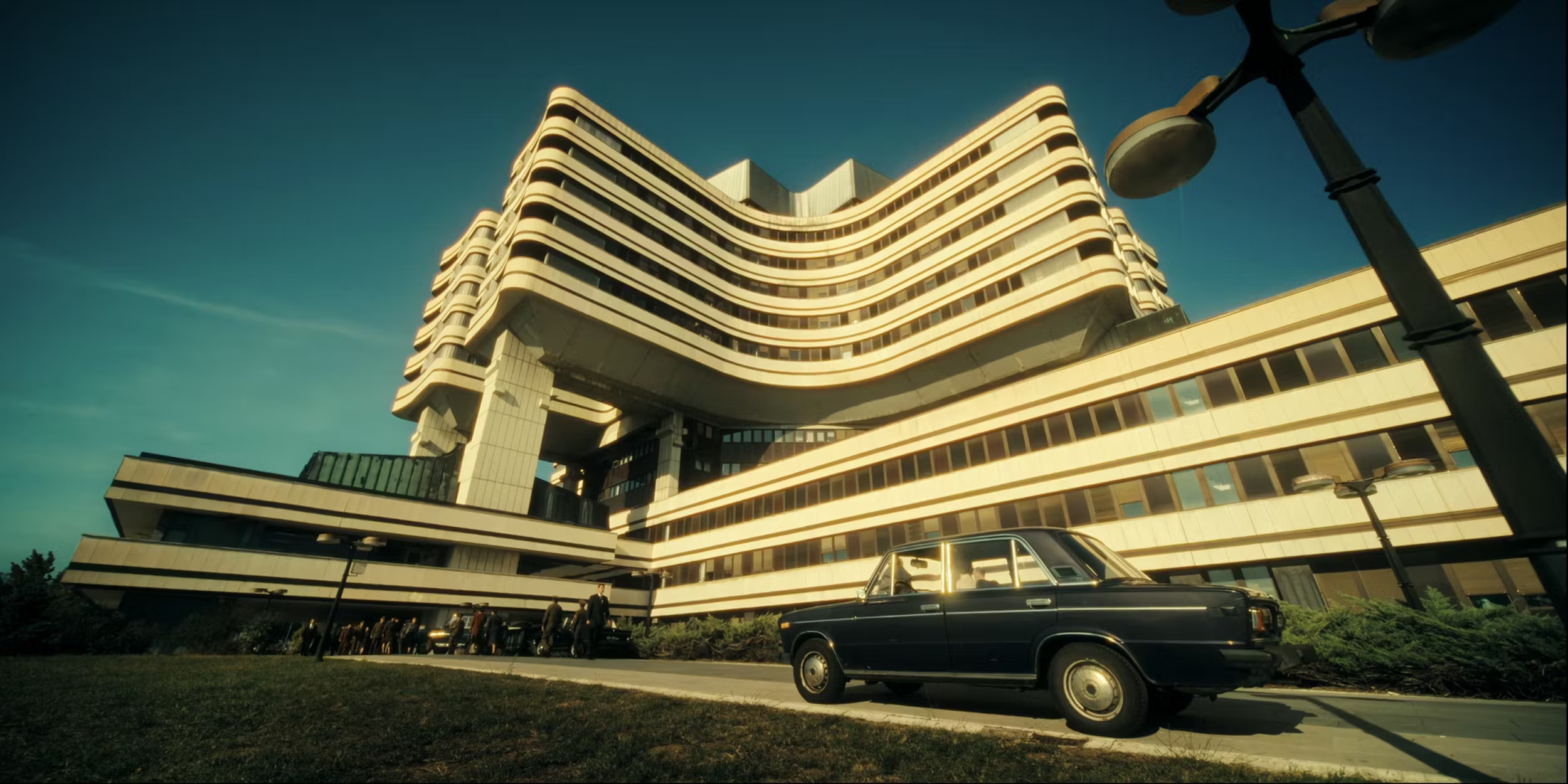
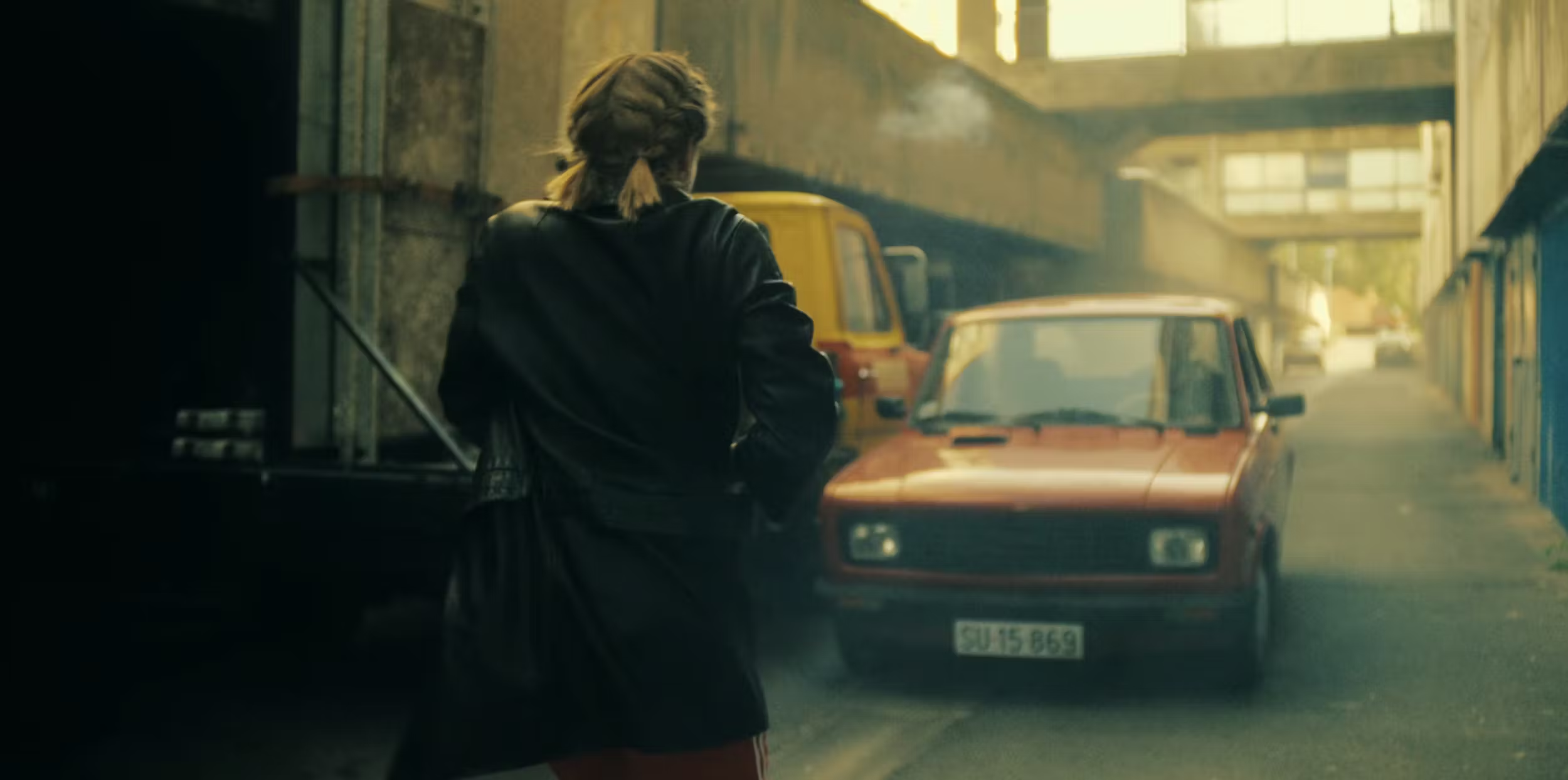
When Kleo takes a detour into Yugoslavia, we catch glimpses of a few Zastava cars, produced by Serbian manufacturer Zastava Automobiles. (Serbia was once part of Yugoslavia.) The Zastava was known stateside as the infamous Yugo, a cheap little hatchback, essentially a cursed Fiat. (Zastava had come to an agreement with Fiat in ’54 to build and sell iterations of their cars.) The Yugo’s intended demographic were consumers in the market for a used car who might be enticed into buying a new car for the same price, a hair under four grand. Instead, the Yugo became the brunt of countless jokes, a punchline on wheels, a true lemon that was uncomfortable, unsafe, unreliable, cheaply made, and slow—its maximum speed was 86 mph. It remains a real contender for the worst car ever made.
Maybe the most interesting car that pops up this season of Kleo, though, is Nikolai’s limo, a fancy car called a GAZ 24 Volga, which was a bit like a Soviet Mercedes. The black Volga (usually a GAZ-21 or a GAZ-24) was so sinister that it developed its own urban legend, which originated in Poland in the mid-‘70s but ultimately spread as far as Russia, Belorussia, Mongolia, and Ukraine. Described as a pitch-black car with white curtains and white wheels, it was thought to be driven by the KGB, Russian mafia, devil worshippers, or possibly even the devil himself. The urban myth evokes Grimm’s Fairy Tales, as its riders were thought to abduct children and steal their blood or organs for wealthy Westerners.

Although his curtains are red, it’s hard to imagine a more fitting car for the diabolical Nikolai. The Volga was one of the most luxurious cars available, meaning they frequently belonged to high-ranking members of the Communist Party and Soviet officials. The Volga itself was probably not inherently demonic, but because its owners were so feared by citizens, it came to represent evil—it was likely not good news if a black Volga pulled up in front of your home at night.
The American car industry was a relentless juggernaut, churning out new models every year, and the Soviet struggle to keep up became the land-based equivalent of the Space Race. But their efforts were in vain. With the dissolution of the U.S.S.R. in 1991 came the introduction of Western carmakers into the Russian and East German market. By the early ‘90s, import duties in Russia had gone way down, which led to foreign cars accounting for about half of all sales.

Most Russian automakers folded or joined forces with Western brands, as many of them didn’t stand a chance against Western design and advancements. The divide between West and East Germany was just as vast, with the former being much more cutting-edge than the latter. That rift began to dissolve in the ‘90s as well. Up until this point, most of the vehicles that have appeared on Kleo have been relics of the Soviet Union, especially since Kleo continues to tangle with her old comrades who can’t let go of the past. East and West are just beginning to commingle in a compelling chapter in automotive history—one we hope to see revealed in Kleo if and when the series gets a third season.

